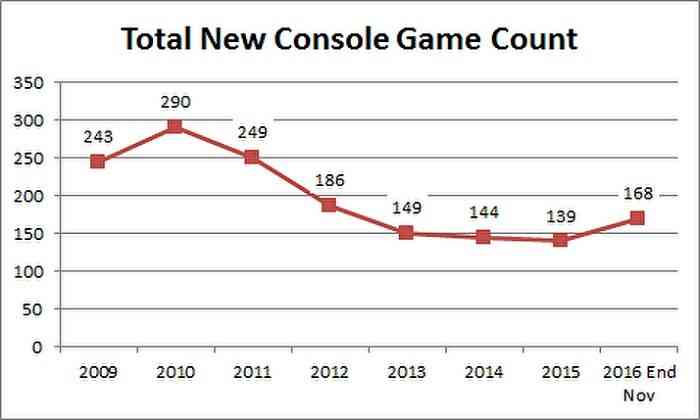So More People Are Getting in the Habit of Voting with Their Wallets
At least that is the hopeful takeaway when we talk statistics. Analysts who spoke to GamesIndustry.biz have revealed a comprehensive 2016 game revenue stream begotten by physical game sales. But you don’t have to be good at math to know what’s going on. 296 titles were released from January to November, raking in $3.53bn, which is actually a drop from last year despite more games released. And that’s where it gets interesting.

You want I explain the chart? 296 games released, only 168 of them actually ‘new.’ That means titles introduced this year and not– what is essentially–repackaged content: whether its GOTY editions, all-in-one bundles, stuff like that. And these are all titles that came with physical copies. Hence, although we got more physical copies people spent less. While digital purchases have factored in to decreasing physical sales,there’s apparently more to it than that according to analysts:
“Although there has been a decline in the dollars spent per title during 2016, the trend in the last five years has been increased spending with fewer titles,” says NPD Analyst Sam Naji. In short, quality over availability.

This year also happens to be the year Activision saw a major drop in sales, Call of Duty: Infinite Warfare being the first game in the franchise to fall far below monetary expectation. Coincidence? Maybe gamers are liable to purchase more digital copies here and there. But household names in gaming, Call of Duty among them, plausibly have the biggest correlation to physical game sales. They do drive millions of physical copies by garnering more attention from mainstream consumers, and often serve as ideal gifts.
In sum, this may indicate future spending habits that will inform executive decisions in gaming. This is how gamers voice themselves. And speaking of, what are your thoughts? Feel free to comment down below. For more news, stay up to date with COGconnected.